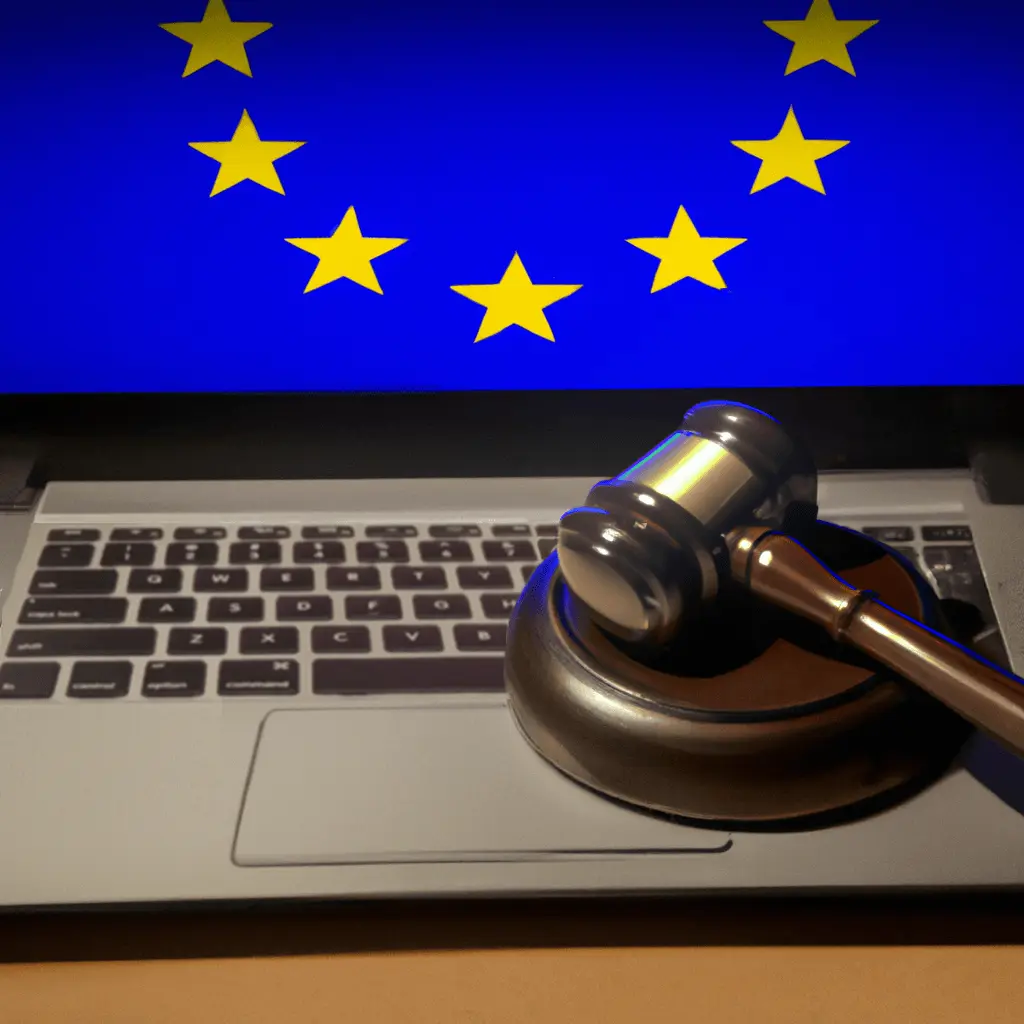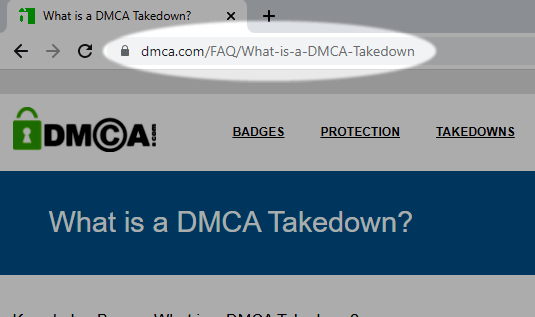
The European Union and each European country have a different "DMCA Takedown" process than the USA. ISP's, websites and service providers can follow their local laws within their country or jurisdiction when processing takedowns. The EU follows a Notice and Takedown process.
To get started go to: DMCA Takedown Signup and complete the form.
What is the takedown Process in the European Union?
DMCA.com's takedown team is familiar with the process of DMCA Takedowns, Cease and Desist notices and Notice and Take down procedures within the EU. The DMCA.com takedown professionals are familiar with the takedown procedures within every country throughout Europe.
DMCA.com is qualified to go to work on behalf of copyright and content owners. DMCA.com has conducted takedowns on websites and hosting companies around the world. Our staff and process are refined to process takedowns throughout Europe. Each region or country will have a different copyright takedown process and DMCA.com is familiar with most of them.
In fact, most often the takedown team will be familiar with the website and the hosting company. This is important, because prior to starting the notice, the takedown team can advise as to whether there are any special considerations involved in conducting the takedown for each unique case.
To get started simply go to: DMCA Takedown Signup and complete the form. Submit questions regarding European takedowns here: DMCA Question Form.
DMCA.com Fast Tip
Although our name, DMCA.com, is based on a US Copyright Act, DMCA.com is truly an international company conducting business for our clients across the globe.
European Copyright Takedown Process: Protecting Creative Works Online
In an effort to safeguard intellectual property rights, the European Union has implemented a copyright takedown process that enables copyright holders to remove or disable access to infringing material.
Removing or Disabling Access
Under the European copyright takedown process, copyright holders are granted the power to request the removal or disabling of access to content that infringes their copyright. When a copyright holder discovers infringing material online, they can file a formal complaint with the platform hosting the content. This complaint triggers a series of actions aimed at addressing the issue promptly and efficiently.
The Counter Notice
To ensure a fair and balanced process, the European copyright takedown process incorporates a counter notice mechanism. Once a copyright holder's complaint is received, the alleged infringer has the opportunity to submit a counter notice if they believe the removal or disabling of access was unjustified. This counter notice presents an opportunity for the alleged infringer to present their case and contest the claim made by the copyright holder.
Good Faith Belief
Both the copyright holder and the alleged infringer are expected to act in good faith throughout the takedown process. This means that copyright holders must genuinely believe that their rights have been infringed and provide evidence to support their claim. Conversely, alleged infringers must also act in good faith by submitting a counter notice only if they genuinely believe the takedown request was unfounded. This emphasis on good faith helps prevent abuse of the takedown process and encourages a balanced and fair resolution.
Protecting Against Infringing Activity
The European copyright takedown process serves as a crucial tool in the protection of copyright holders' intellectual property rights. It allows them to take swift action against infringing material, thus discouraging unauthorized use and distribution of copyrighted works. By addressing instances of infringement promptly, the process helps maintain the integrity and value of creative works, incentivizing continued innovation and creation.
The European copyright takedown process provides an effective framework for copyright holders to protect their works online. Through the ability to remove or disable access to infringing material, coupled with the opportunity for alleged infringers to submit counter notices, the process aims to strike a balance between the rights of copyright holders and the principles of fairness. By encouraging good faith belief and addressing instances of infringement promptly, this process plays a vital role in safeguarding creative works in the digital era.
What is required to file a Notice and Takedown in the European Union?
To file notices, these three things are needed to get started:
1. Infringing URL

Where on the internet is the stolen content located? What is the link that the content needs to be removed from? Be sure to provide the URL or website/webpage link of the content to be removed. If the stolen content is an image or video located on a website provide the direct link of the content contained in the site. Copy and paste the infringing text, or provide the URL of the infringing image if required.
An example link would look like: https://www.badguy_site.com/webpage/image_2

2. Source URL
Where was the content located when it was stolen? Was it on a social media profile? Was it from a website? Provide the exact URL where it was stolen from, even if the content has already been removed from its original location. The original URL is still valuable to the notice. If it was not online, reference cell phone, computer, or camera etc. If it was online such as a website or cloud storage provide the link to the exact page it was stolen from. Upload the original content to a cloud storage service and provide that URL with an explanation of where it was originally stolen from.
An example link would look like: https://share.icloud.com/photos/my_original_content
3. Description of Ownership

What is the content owner's name and how was the content stolen? Who created it, owns it, copyrighted it? Who is claiming ownership of the content? Who is authorized to file the DMCA Takedown? When was the content created and when was the content stolen?
An example description would sound like: "My photo I took of myself on my camera was stolen from my Google Drive and was posted on this website without my knowledge and I would like it removed."
Unsure how to collect the information for these three categories? The Professional Takedown Team at DMCA.com can help with the answers. Click here to ask a question!
Who can file a Notice and Takedown in the EU?
- copyright owners
- social media users and participants
- NFT owners
- content creators/owners
- code writers and publishers
- content publishers or distributors (with permission of the content or copyright owners)
- subject contained within the content and published without permission (special considerations may be required)
Unsure about these categories? By all means ask! Click here to ask a question!
DMCA.com Testimonial
I recently developed and released my first video game, and before long, pirates were trying to hand out free copies, risking the success of my new business venture. DMCA, upon my request, promptly dealt with all infringing parties and restored my freedom from piracy. -Game Developer
What is the Notice and Takedown in the European Union?
When content is removed from a website at the request of the owner of the content.
Note: although the Notice and Takedown is part of Copyright law, a Notice and Takedown does not require the content to be copyrighted in order for the request to have the content taken down acted upon by the website owner or ISP.
Click here to process a takedown now: Website Takedown Form
Is DMCA used in the EU?
While the DMCA is part of USA Copyright Law. The DMCA Takedown process described within the law is widely used throughout the world. Most countries accept the standard DMCA Takedown Notice form and process. Although the DMCA Takedown is part of US Copyright law, a DMCA Takedown Notice is often used and accepted throughout the world and not exclusive to the United States. However, many countries have their own copyright laws specifically related to the removal of content from internet service providers and site owners within their borders. Which service providers do and do not accept the standard DMCA takedown notice form and process is dynamic and constantly changing. DMCA.com professionals are aware of these constant changes and are able to convert the information submitted through the standard DMCA Takedown signup form to suit specific countries and/or service providers within the legal process they require.
When is an EU Notice and Takedown used?
- When copyright infringing content is removed or "taken down" from a website by the website owner upon receipt of a Takedown Notice from, or on behalf of, the content owner, distributor, publisher etc.
- When copyright infringing content is removed or "taken down" from a website, by the website owner, upon receipt of a Takedown Notice from their ISP / Hosting company. This notice is generated by, or on behalf of, the illegally published content owner, distributor, publisher etc.
- When copyright infringing content is removed or "taken down" from a website by the ISP or Hosting company of the website that is publishing the infringing content. This occurs because the website owner has not voluntarily complied with a Takedown Notice and the ISP or Hosting company must comply with the Takedown notice.
- When an infringing website is taken down or "offline" by its ISP or Hosting company. This occurs because the website owner does not voluntarily comply with a Takedown notice as described above.
Many European countries are covered under the Electronic Commerce Directive
See wikis here:
- Electronic Commerce Directive which is part of
- Electronic Commerce Regulations 2002.
Under the European Electronic Commerce Directive is Article 14 which specifically deals with Notice and Take down procedures. See European Union Notice and Take down.
Related DMCA Takedown FAQ's
- What is DMCA Protection?
- What are DMCA Takedowns?
- What is DMCA.com?
- Does Canada have a version of the DMCA Takedown?
- How soon will my content be removed from the website?